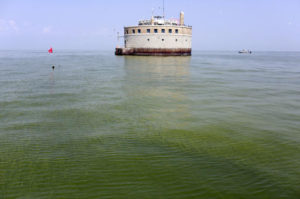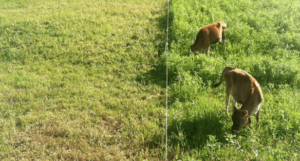As Spring soon rolls into the Midwest, the ugly reality of melting snow across hundreds of thousands of manure fertilized fields again manifests. And the picture is not pretty.
In recent years Lake Erie has experienced Harmful Algae Blooms (HABs) larger than the size of New York City. Most of this pollution — which comes in the form of phosphorus — empties into the Western Ohio part of the Lake via the Maumee River basin.

Since the Cuyahoga River Basin contains over 15%, or nearly 2,000,000 people, of the State of Ohio’s population, it is popular to contend that these cities are responsible for the pollution. But this argument falls flat, according to a report from LakeErieAlgae.com.
The differences in how heavy spring rainfalls affect phosphorus loads in two watersheds – the Maumee and the Cuyahoga – show the different impacts of non-point sources (like the primarily agricultural lands in the Maumee River basin) and point sources (like the urban and industrial lands in the Cuyahoga River basin, which houses nearly 15% of Ohio’s population). Both watersheds occasionally have combined sewer overflows (CSOs), but research suggests these volumes pale in comparison to the river volume during storms.
In short, the Maume River, flowing through the mostly agricultural Maumee River Basin, is responsible for the vast majority of the phosphorus pouring into Lake Erie. And this phosphorus is the key trigger to HABs.
Watch closely as Spring 2017 approaches. HABs will result no matter what but, should heavy rains accompany the annual melting of snow, record HABs will again be reported across not just Lake Erie, but throughout the USA and beyond.
This excellent report from The National Wildlife Federation (NWF) offers numerous touch points on how to curb HABs, like the below:
- We need increased actions to address nonpoint source pollution, in particular agricultural runoff. This includes increased targeting of Farm Bill and other programs to priority areas, and continuing research to identify key nutrient source areas.
Summer HABs will be explained in no small part by Spring meltdown and precipitation levels.
The connection is indisputable.



